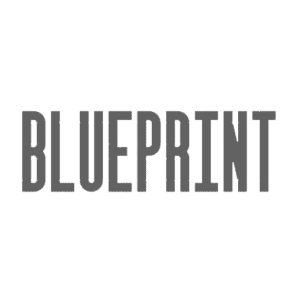Oklahoma Contemporary Arts Center
As Seen In



























Oklahoma Contemporary’s new downtown campus stands as a unique cultural destination among the architecture of Oklahoma City, a sculptural expression of the nonprofit’s mission to provide accessible, inclusive arts experiences for children and adults. The 53,916 square-foot, four-story building, “Folding Light,” anchors the 4.6-acre campus, which includes a renovated 9,839 square-foot 1910 historic warehouse (to house studios for ceramics, fiber, metal and wood) and a three-block arts park.
Situated on the northern edge of historic Automobile Alley within the burgeoning Innovation District, the Center is a place for the community to gather and to create and experience art.
The story of Folding Light’s design begins at sunrise. Our goal for this project was to uncover something ethereal and timeless that embodies the spirit of the place and Oklahoma Contemporary’s mission. With this in mind, our focus turned to Oklahoma’s big skies. In Oklahoma, the horizon is always visible, resulting in sunrises and sunsets that are an uplifting experience.
The early morning skies bring the east elevation to life as a luminous, color-changing surface.
The unique exterior skin is constructed from recycled, bright-dipped aluminum fins, resulting in an ethereal facade designed to capture the state’s ever-changing weather, reflecting and embracing the landscape’s dramatic changes in light and sky. This morning, the building skin transforms as the sun rises on a dark blue stormy sky.
“Our building is not just a physical structure, but a transformative force.”
– Executive Director, Trent Riley
“An elegant jewel in the Oklahoma landscape. The sun setting on the exterior skin visually transforms the museum.”
– Judge’s Comments –
World Architecture News (WAN) Awards
What makes the Oklahoma Contemporary Arts Center Unique?
The unique skin was chosen for its sustainable and visual qualities and includes over 37 miles of custom-designed, extruded aluminum fins. The signature “fins” were designed in nine geometric variations that interlock to wrap the building and funnel rainwater. Details of the fins above show the folding facade’s intricacy and the expansion joint in staggered positions.
The urban project site sat vacant for 20 years – an unused grass field with an adjacent, small park directly to the west. The main structure complements the site’s position on a major downtown thoroughfare, reactivating the site and acting as infill on the streetcar line.
Sunset and sunrise are celebrations at Oklahoma Contemporary as the building becomes the color of the horizon. As the sun sets, the light creates a luminous glow on the west elevation.
Overflow drains discharge from the rooftop 90-feet away and artfully integrate with the aluminum fins.
The interior of the lantern is enclosed on two sides with 50% fins and the third side is shared with the building. Full height LED lights at each corner give this space its internal glow.
The vertical, four-story Lantern is lit each evening, a dramatic tower of light at the southwest corner marking the campus entry. The Lantern is a steadfast source of light in the night and an iconic new Oklahoma City landmark.
The post-sunrise light grazes the aluminum skin creating shade, shadow and color. The textural variation and folding façade capture, reflect and hold light with colors ranging from gold to blue. The fourth-floor sunscreen on the upper right controls the southwest sun. The lantern is on the left and is 50% transparent.
To the east, a sculptural canopy adds elegance and protection from the elements on arrival. Inspired by the tall grass prairies of Oklahoma, three steel columns support the structure, with a single steel member reaching beyond its tip. A winter sunrise causes the aluminum skin to glisten and hold the color of the light.
The northeast corner at sunrise is washed in pink and blue and the windows give you a glimpse of the horizon. The entry canopy on the left frames downtown beyond. To the right is the second floor terrace.
The north side of the building receives no direct light in winter, yet it responds to the unseen light from the north. Near sunset, the open roof edge is backlit and reacts with hot reflections. 50% open fins outline the roof and create a transparent enclosure for the mechanical equipment. The light tower illuminates the terrace and the ground-level lawn. The large square windows are the dance rehearsal space.
The second-floor terrace provides comfortable outdoor space for performances, events and classes. Facing west, the terrace glistens from indirect light from the north. The raking light backlights the roof screen and the windscreen on the terrace level.
Details demonstrating the pattern of reaction and reflection on the west side of the sunscreen for the terrace. A rain-through concrete panel provides the walking surface.
The northwest corner of the building as seen on a snowy winter day. With gray skies, the building reflects a shimmering steel gray to match.
The Romeo and Juliet balconies allow visitor views of the sunset and the sunrise.
“Oklahoma City’s cultural landscape has come of age the last two decades, and hardly a week passes without a major new development, but the opening of the spectacular new home of Oklahoma Contemporary is on another level. This is a world-class facility, dedicated to art in all its forms, and our region will not be the same after its arrival. What it means to our cultural life is only rivaled by what it will mean to our city’s economic growth. The synergy between this facility and Automobile Alley, the Innovation District, our new convention center, Scissortail Park, Midtown and Bricktown will be amazing, and all of it will be linked by the streetcar. I can’t wait.”
– David Holt –
Mayor of Oklahoma City
Client: Oklahoma Contemporary Arts Center
Scope: The 4.6-acre campus includes:
Folding Light – The 53,916-square-foot main building with 7,279 square-feet of gallery space and nine classrooms.
The Studios – A renovated 9,839 square-foot 1910 historic warehouse to house studios for ceramics, fiber, metal and wood.
Campbell Art Park – A three-block arts park, providing space for outdoor exhibitions, education programs and public performances.
Services: Architectural Design, Interiors
Completion: 2020
American Council of Engineering Companies | 2020 Nebraska Honor Award
Architect’s Newspaper | 2020 Best of Design Editor’s Pick
Architecture Masterprize 2020 | Cultural Architecture
Architizer | 2021 A+Awards Finalist Architecture+Facades
Blueprint Awards Shortlist 2020 | Best Public-Use Project (Privately Funded)
Dezeen | Top 10 U.S. Architecture Projects of 2020
Elle Décor | 22 Most Beautiful Architectures of 2020
Interior Design | Best of Year Award Finalist 2020 | Bright Golden Haze
LCD Berlin | New Cultural Destination of the Year Nominee 2021
ULI Oklahoma Impact Award | Large Scale Development Award 2021
World Architecture News 2020 WAN Award Shortlist | Civic Category
Metal Architecture Awards | 2021 Grand Award Winner
Metal Architecture Awards | 2021 Smooth Metal Wall Panel Winner
AIA Central States Region Excellence in Design Awards | 2021 Merit Award
Paseo Arts Award | 2021 Creative Placemaking Award
AIA Oklahoma Design Awards | 2021 Merit Award
AIA Central Oklahoma Design Awards | 2022 Honor Award, Excellence in Craft
American Architecture Award | 2021 Best New Museum and Cultural Building
AIA Central Oklahoma Design Awards | 2020 Honor Award, Large Commercial Architecture
More Projects Like This